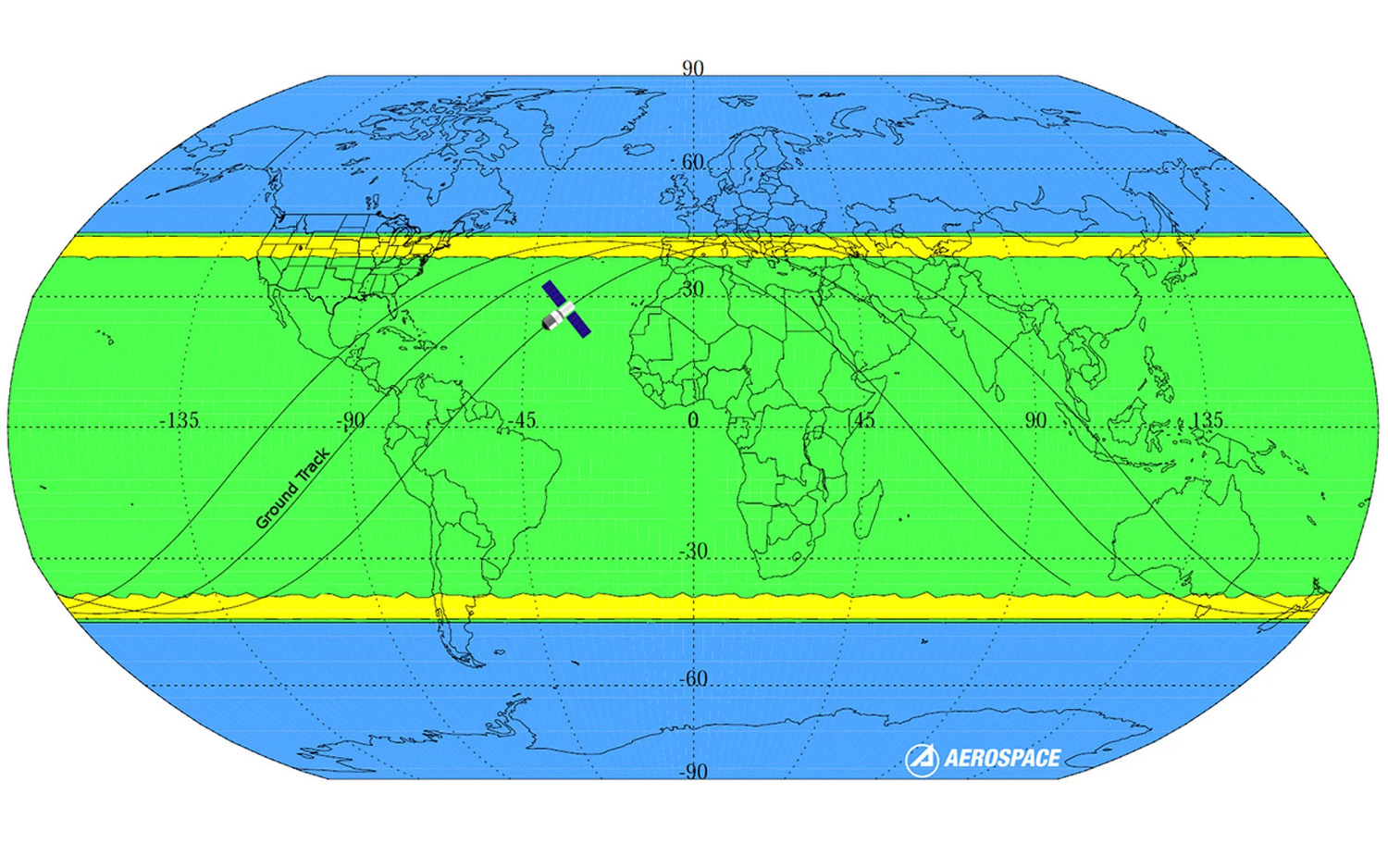Chinese Space Station May Crash Like NASA's Skylab

China's Tiangong-1 space station is predicted to enter Earth's atmosphere sometime during Easter weekend, but the exact location of its re-entry remains a mystery. Its uncontrolled fall to Earth shares some similarities with the end of the Skylab space station in 1979; some of Skylab's pieces rained down on rural Australia.
The European Space Agency's (ESA) Space Debris Office in Darmstadt, Germany, which issued the Tiangong-1 prediction, said the March 30 to April 2 window is "highly variable," and it will not be possible to determine exactly where the space station will fall to Earth. However, the space station will re-enter somewhere between the latitudes of 43 degrees north and 43 degrees south, based on its current orbital inclination. [China's Space Station Crash: Everything You Need to Know]
"Areas above or below these latitudes can be excluded. At no time will a precise time/location prediction from ESA be possible," agency officials said in a statement.
The end of Skylab
Skylab was the first U.S. space station. It orbited the Earth between 1973 and 1979. Skylab's first crew had to perform urgent repairs to the space station when a meteoroid shield ripped off during launch, but the station proved to be a success. It hosted three space crews whose members performed science experiments, including one group of astronauts who remained on the station for a then-record 84 days.
Some at NASA wanted Skylab to remain aloft longer. Around 1980, a group of NASA Marshall Space Flight Center engineers suggested using the space shuttle to boost the orbital complex, according to Wired. After refurbishing the complex and adding an additional Spacelab module, astronauts would have performed experiments in the space station (which was far more roomy than the space shuttle). This would have kept Skylab flying until about 1990. The space shuttle didn't fly until April 1981, however, which kept that option off the table, according to Wired. [Skylab's Remains: Photos of Debris from NASA's 1st Space Station]
Since the station was falling to Earth anyway, NASA elected to try to control Skylab's re-entry as well as it could. The agency, which could still communicate with and direct the space station prior to its re-entry, aimed Skylab to a location approximately 810 miles (1,300 kilometers) south-southeast of Cape Town, South Africa. Skylab broke up faster than expected, however, and parts of it fell in Australia, east of Perth.
The end of Skylab sparked reaction all over the world, ranging from vendors hawking sarcastic T-shirts to ordinary citizens seeking reassurance from their leaders that they wouldn't be hurt. In 1979, Time magazine wrote of the upcoming event: "Thus will be observed, after a series of miscalculations, the tenth anniversary of man's proudest achievement in space, the walk on the moon."
Sign up for the Live Science daily newsletter now
Get the world’s most fascinating discoveries delivered straight to your inbox.
Skylab similarities?

Tiangong-1 is much less massive than Skylab. Tiangong-1 is China's first space station; it launched in 2011 and was visited twice by taikonauts (Chinese astronauts). It masses about 9.4 tons (8.5 metric tons), compared to Skylab's approximately 100 tons. In an interview with National Geographic in October 2017, Jonathan McDowell, an astronomer at the Harvard-Smithsonian Center for Astrophysics, said he only expects a few small pieces of the Chinese station to reach the surface.
In a May 2017 statement to the United Nations, representatives from the Permanent Mission of the People's Republic of China also said Tiangong-1 will pose little threat to Earth's inhabitants. "According to the calculations and analysis that have been carried out, most of the structural components of Tiangong-1 will be destroyed through burning during the course of its re-entry. The probability of endangering and causing damage to aviation and ground activities is very low," the statement read.
China further added that it would provide a "timely forecast of its [Tiangong-1's] re-entry" and would disseminate information through the news media and the United Nations. But because Tiangong-1 stopped working in March 2016, Chinese engineers will not be able to control its re-entry.
Figuring out where the space lab will fall is a complex calculation of the station's altitude, the height of the Earth's atmosphere (which changes according to solar activity) and the station's shape. The space lab will make dozens of orbits between March 30 and April 3, making it extremely difficult to determine where the station will fall. That said, much of Earth is uninhabited — making it likely that Tiangong-1 will fall in the ocean, or, like Skylab, into a remote area.
While Skylab is the most famous spacecraft to fall in an uncontrolled fashion back to Earth, there are many others that have attracted attention over the years. Some examples include the European Space Agency's GOCE satellite (November 2013), NASA's Upper Atmosphere Research Satellite or UARS (September 2011), and the Russian Salyut 7 (which broke up in February 1991 over an area of land in Argentina — which included a town called Capitán Bermúdez — with no reported injuries.)
Follow us @Spacedotcom, Facebook and Google+. Original article on Space.com.

Elizabeth Howell was staff reporter at Space.com between 2022 and 2024 and a regular contributor to Live Science and Space.com between 2012 and 2022. Elizabeth's reporting includes multiple exclusives with the White House, speaking several times with the International Space Station, witnessing five human spaceflight launches on two continents, flying parabolic, working inside a spacesuit, and participating in a simulated Mars mission. Her latest book, "Why Am I Taller?" (ECW Press, 2022) is co-written with astronaut Dave Williams.










